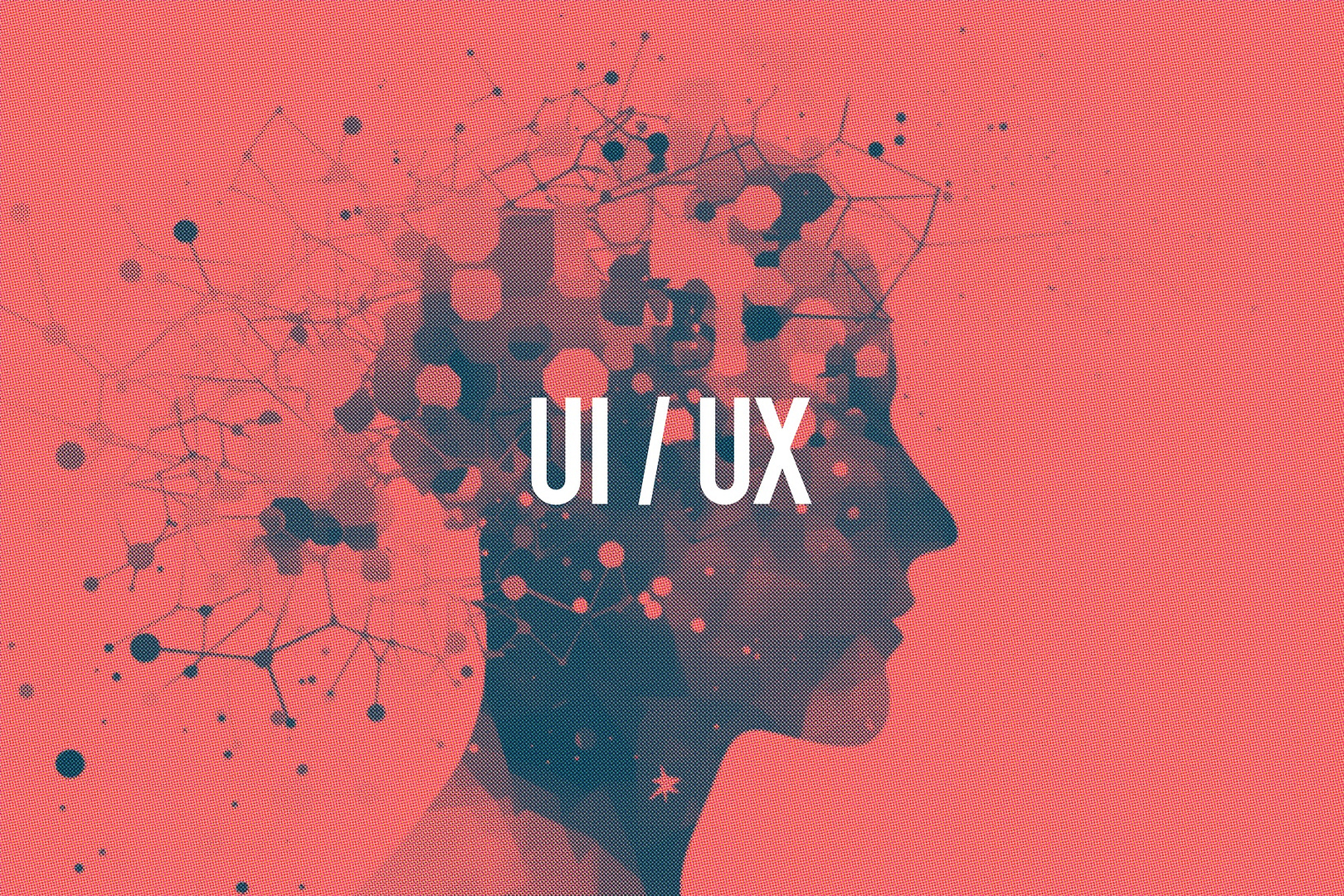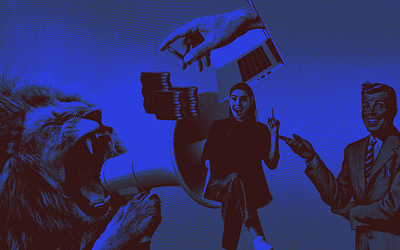Table of Contents
The significance of the Emotional Web in UI/UX design cannot be overstated. The Emotional Web is predicated on the understanding that human beings are not just rational, decision-making entities but also profoundly emotional creatures. Our decisions, especially in the digital landscape, are influenced by a complex blend of feelings, experiences, and psychological triggers. Thus, designing for the Emotional Web requires a nuanced approach that goes beyond usability and functionality to tap into the emotional pulse of the user experience.
It’s about creating a memorable experience that resonates on a personal level, encouraging not just loyalty but advocacy.
This blog post delves into the intricacies of leveraging psychological triggers in UI/UX design to craft experiences that captivate, engage, and ultimately convert users.
The Psychology Behind UI/UX Design
Understanding the psychological underpinnings of user behaviour is crucial in crafting UI/UX designs that attract and retain user engagement. Psychology in UI/UX design encompasses the study of users’ cognitive, emotional, and social tendencies, providing a framework for designers to create more intuitive and emotionally resonant interfaces.
Cognitive Load Theory
At the heart of UI/UX design psychology is the concept of cognitive load, which refers to the amount of mental effort being used in the working memory. In the context of digital interfaces, a design that requires minimal cognitive load is crucial for a seamless user experience. Simplifying navigation, minimising distractions, and using familiar UI patterns can help reduce cognitive load, making digital products more accessible and enjoyable for users.
Emotional Design
Donald Norman, a pioneer in the field of user experience, introduced the concept of emotional design, which emphasises the importance of emotional responses to design. Norman identified three levels of design—visceral, behavioural, and reflective—that together influence a user’s emotional response. Visceral design focuses on the initial impression of a product, behavioural design on usability and functionality, and reflective design on the personal significance and memories associated with the product.
The Role of Colour Psychology
Colour plays a pivotal role in emotional design, with each colour capable of evoking specific emotional responses. For instance, blue is often associated with trust and security, making it a popular choice for banking and social media apps. Red, on the other hand, can evoke feelings of excitement or urgency, which is why it’s frequently used for call-to-action buttons or sale announcements. Understanding colour psychology allows designers to strategically employ colour schemes that align with the desired emotional response.
The Principle of Fitts’s Law
Fitts‘s Law is another psychological principle relevant to UI/UX design. It posits that the time required to move to a target area (e.g., a button or link) is a function of the distance to the target and the size of the target. This principle underscores the importance of designing interactive elements that are easy to find and use, particularly on mobile devices where screen real estate is limited.
Incorporating these psychological principles into UI/UX design not only enhances the user experience but also fosters a deeper emotional connection with the product.
Leveraging Emotional Design
Emotional design is the art of creating products that elicit specific feelings in the user, thereby enhancing the overall user experience. It goes beyond the mere functionality of a product to tap into the user’s emotional responses, making the interaction with the product more memorable, satisfying, and effective. Here, we explore the significance of emotional design in UI/UX and how it can be leveraged to create more engaging digital experiences.
The Importance of Emotional Design
The core objective of emotional design in UI/UX is to evoke a positive emotional response from users. This approach acknowledges that users are not just looking for a product that meets their needs but also one that feels good to use. Emotional design can transform a user’s interaction with a digital product from purely transactional to deeply engaging, fostering loyalty and encouraging long-term relationships with the brand.
Components of Emotional Design
- Visceral Design: This aspect of emotional design focuses on the initial aesthetic appeal of a product. It’s about creating a strong first impression through visuals, sounds, and overall feel. A well-executed visceral design captures attention and draws the user in, setting the stage for a positive user experience.
- Behavioural Design: Behavioural design concerns itself with the usability and functionality of a product. It’s about making sure the product works well and is easy to use. A product that responds predictably to user actions and effectively solves user problems can create feelings of satisfaction and accomplishment.
- Reflective Design: Reflective design relates to the personal significance and the story behind the product. It’s about how the user perceives the product in retrospect, including the emotions, memories, and meanings associated with it. Reflective design can inspire pride of ownership and a deep, emotional bond with the product.
Examples of Successful Emotional Design
- Apple: Apple’s product design focuses heavily on the visceral, with sleek, aesthetically pleasing products that immediately capture attention. The behavioural design of Apple products, characterised by intuitive interfaces and seamless interactions, reinforces positive emotions. Reflective design is evident in the way users perceive Apple products as status symbols, reflecting personal style and identity.
- Duolingo: The language learning app Duolingo uses gamification as a form of emotional design, turning learning into a fun and engaging activity. Its friendly mascot and positive reinforcement for completing lessons appeal to users’ emotions, making the learning process enjoyable and rewarding.
Leveraging emotional design requires a deep understanding of the target audience, including their needs, desires, and the emotional triggers that drive their behaviour.
Emotional design in UI/UX is not just about making things look good; it’s about creating a holistic experience that resonates with users on a personal and emotional level. By thoughtfully incorporating emotional design principles, brands can create more meaningful and memorable digital experiences that stand out in a crowded digital landscape.
Psychological Triggers in UI/UX Design
Understanding and incorporating psychological triggers into UI/UX design can significantly enhance user engagement and satisfaction. These triggers are deeply rooted in human behaviour and emotion, influencing users’ decisions and actions within a digital environment. Below, we explore key psychological triggers and how they can be effectively integrated into UI/UX design.
Trust and Security
Building User Confidence Through Design: Trust is paramount in any user interface. Utilising familiar design patterns, clear privacy policies, and secure transaction symbols (like SSL certificates) can reassure users, encouraging them to engage more deeply with the platform. For instance, Dool employs design elements that users find familiar and trustworthy, reinforcing confidence and safety.
Joy and Satisfaction
Using Gamification and Rewards: Incorporating elements of gamification, such as points, badges, or levels, can make the user experience more enjoyable and rewarding. This approach leverages the psychological principle of positive reinforcement, encouraging continued engagement. Duolingo’s success with gamification exemplifies how making tasks enjoyable can significantly enhance user motivation and satisfaction.
Fear of Missing Out (FOMO)
Limited-time Offers and Exclusivity: FOMO can be a powerful motivator in decision-making processes. Designing elements that highlight the exclusivity or time sensitivity of an offer can prompt users to take action to avoid missing out. Flash sales, countdown timers, and exclusive access for members are all effective ways of leveraging FOMO in design.
Curiosity and Engagement
Interactive Elements and Storytelling: Encouraging user curiosity through interactive elements and storytelling can lead to more engaging and memorable experiences. This could be as simple as implementing hover effects to reveal more information or as complex as integrating narrative elements into the user journey. By sparking curiosity, users are more likely to explore further and engage more deeply with the content.
Implementing Emotional Triggers
Successfully integrating psychological triggers into UI/UX design requires a strategic approach, grounded in a deep understanding of the target audience and their emotional drivers. Below is a step-by-step guide to implementing these triggers in design projects:
- User Research: Start with thorough user research to understand the emotional drivers, needs, and behaviours of your target audience. This could involve surveys, interviews, or user testing.
- Define Emotional Goals: Based on your research, define the emotional goals of your design. What feelings do you want to evoke in your users? Trust? Joy? Anticipation? Your design should aim to elicit these emotions at various points in the user journey.
- Map Out the User Journey: With your emotional goals in mind, map out the user journey, identifying key points where emotional triggers can be most effectively integrated. Consider where users might need reassurance, where they might benefit from positive reinforcement, or where curiosity could be piqued.
- Design with Emotion in Mind: Utilise design elements and principles to craft experiences that align with your emotional goals. This might involve selecting specific colours, imagery, typography, and interactive elements that resonate with your desired emotional triggers.
- Test and Iterate: Implementing emotional triggers is not a one-time task but an ongoing process. Conduct user testing to see how effectively your design evokes the intended emotions and refine your approach based on feedback.
Tools and Techniques for Emotional UI/UX Design
Incorporating emotional design into UI/UX requires a blend of creativity, psychology, and technology. This section outlines the tools and techniques designers can use to create emotionally engaging experiences that resonate with users on a deeper level.
Microinteractions
Microinteractions are small, often overlooked elements in UI design that can significantly impact the user’s emotional experience. A satisfying haptic feedback, a delightful animation upon completing a task, or a humorous error message can transform mundane interactions into moments of joy and surprise.
Storytelling
Incorporating storytelling into UI/UX design can evoke emotions and create a more immersive experience. By weaving a narrative through the interface, designers can engage users on an emotional level, making the digital experience more meaningful and memorable.
Use of Colour and Imagery
The strategic use of colour and imagery can evoke specific emotions and set the tone for the user experience. Warm colours can create a sense of comfort and energy, while cool colours can convey calm and trustworthiness. Similarly, imagery can be used to trigger emotional responses, with authentic photos creating a sense of connection and illustrated graphics adding whimsy and playfulness.
Challenges and Considerations
While emotional design can significantly enhance the user experience, it also presents unique challenges and ethical considerations.
Balancing Emotion and Usability
One of the primary challenges in emotional design is balancing emotional elements with usability. Overemphasis on emotional design can sometimes detract from the functionality of the product, leading to a beautiful but ultimately frustrating user experience. Designers must ensure that emotional design enhances rather than hinders usability.
The Future of Emotional UI/UX Design
As we move further into the digital age, the role of emotional design in UI/UX is set to evolve in exciting new ways. With advancements in technology and a deeper understanding of human psychology, the potential for creating even more personalised and emotionally resonant user experiences is vast. This section explores the future trends and predictions for emotional UI/UX design.
Advancements in AI and Machine Learning
Artificial Intelligence (AI) and machine learning are at the forefront of shaping the future of emotional design. These technologies allow for unprecedented levels of personalisation, enabling UI/UX designs to adapt in real-time to the emotional state and needs of the user. As AI becomes more sophisticated, we can anticipate interfaces that not only respond to our actions but also anticipate our emotional responses and adjust accordingly, creating a more intuitive and empathetic user experience.
Enhanced Haptic Feedback
Haptic feedback technology, which provides tactile responses to digital interactions, is set to become more sophisticated, offering new ways to enhance the emotional impact of UI/UX design. Future advancements could include more nuanced and varied haptic experiences that mimic real-world sensations more closely, providing a deeper sense of immersion and emotional engagement.
Virtual and Augmented Reality
Virtual Reality (VR) and Augmented Reality (AR) technologies are opening new frontiers for emotional design by creating immersive environments that can evoke strong emotional responses. As these technologies become more accessible, designers will have new tools at their disposal to create compelling, emotionally engaging experiences that blur the line between the digital and physical worlds.
Conclusion
The exploration of psychological triggers in UI/UX design reveals a rich landscape where design meets human emotion, bridging the gap between digital interaction and emotional connection. As we’ve delved into the intricacies of emotional design—from leveraging psychological principles to examining case studies and considering future advancements—it’s clear that the emotional dimension of design is not just an enhancement but a necessity for creating meaningful digital experiences.
Incorporating emotional triggers into UI/UX design is more than a strategic advantage; it’s a commitment to understanding and valuing the user’s emotional journey. It recognises that behind every click, swipe, or tap is a human being seeking not just functionality but also connection, relevance, and affirmation. By designing with an emotional perspective, we not only cater to the practical needs of users but also speak to their hearts, fostering a deeper engagement that transcends the digital interface.
The case studies of Airbnb, Spotify, Duolingo, and projects undertaken by Dool Creative Agency underscore the transformative power of emotional design. They illustrate how a deep understanding of user psychology, coupled with creative and technological prowess, can create experiences that resonate on a personal level, driving loyalty and advocacy.
As we look to the future, the potential for emotional design in UI/UX is boundless. Advancements in AI, emotional recognition, and immersive technologies promise new frontiers for personalisation and emotional engagement.
FAQs
What are psychological triggers in UI/UX design?
In UI/UX design, psychological triggers refer to elements and strategies that leverage human psychology to influence user behaviour and emotional responses. These triggers can include visual cues, interactive elements, and content that tap into basic human instincts and emotions, such as trust, joy, curiosity, and fear of missing out (FOMO), to enhance user engagement and satisfaction.
How can emotional design improve user engagement?
Emotional design improves user engagement by creating a more meaningful and resonant experience for the user. By appealing to users’ emotions and psychological needs, emotional design fosters a deeper connection between the user and the digital product. This enhanced engagement leads to higher user satisfaction, increased loyalty, and a greater likelihood of users advocating for the product or brand.
What are some common tools used in creating emotional UI/UX designs?
Common tools for creating emotional UI/UX designs include user research tools to understand the target audience’s emotional drivers; design software for crafting visually appealing interfaces; AI and machine learning technologies for personalisation; emotional recognition technologies to adapt interfaces based on user emotions; and prototyping tools to test and refine emotional design elements.
Can emotional design be measured, and how?
Yes, emotional design can be measured through various methods, including user feedback, emotional response surveys, A/B testing, and analytics tracking engagement and conversion rates. Advanced techniques such as eye tracking and facial expression analysis can also provide insights into users’ emotional reactions to design elements.
How does Dool ensure the ethical use of emotional triggers in their designs?
Dool ensures the ethical use of emotional triggers by prioritising user consent, transparency, and privacy. We conduct thorough user research to understand and respect the emotional landscape of our target audience. Our designs aim to enhance the user experience without manipulation, ensuring that emotional triggers are used to add value and enrich the user’s digital interaction. Ethical considerations are at the forefront of our design process, ensuring that we uphold the highest standards of integrity and respect for the user.







